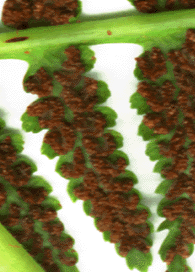
Go outside, any time of the year, even winter. Look around. What do you see? Plants. You see trees, grass, moss, ferns, flowers, and shrubs. There are plants all over the place. Some of them cover the ground. Others shoot up high on their own, or climb up the sides of buildings. They're everywhere.
Most people do not think about plants very often. They do not have to. But a particular kind of scientist thinks about them all the time. A scientist who studies plants is a botanist, and the study of plants is botany.
How do botanists study plants? They begin by putting them into groups that are closely related, and then they divide the groups into smaller groups that are related. Sorting things into groups based on their traits is called classification.
Scientists divide living things into five kingdoms. In this unit we are only studying the plant kingdom, but there are four other kingdoms: animals, fungi, bacteria, and protists. Each of these kingdoms is divided into groups as well.
Scientists divide plants into two main groups: seed plants, plants which produce new plants in seeds, and non-seed plants, plants which produce new plants without seeds.
| Examples of non-seed plants are algae (AL-jee), mosses, and ferns. Non-seed plants use tiny cells called spores to make new plants. |  |
The seed plants are divided into two groups too. These groups are the gymnosperms (JIM-noh-spurms) and the angiosperms (AN-jee-oh-spurms). Gymnosperms are plants which produce seeds in cones. One well-known type of gymnosperm is the conifer, which includes pine trees and spruce trees. Angiosperms are plants which make their seeds in flowers. We call angiosperms flowering plants.
When you look around you outside, most of the plants you see are seed plants, and most of those are flowering plants. That was not always the case. 300 million years ago, in the Carboniferous era, the world was packed with ferns of every shape and size.
Things have changed. You can still find non-seed plants in most places, but seed plants, especially flowering plants, have taken over the land.
Plants are everywhere, and without them other kinds of life could not survive.
In the diagram below, you can see how plants are classified by scientists.